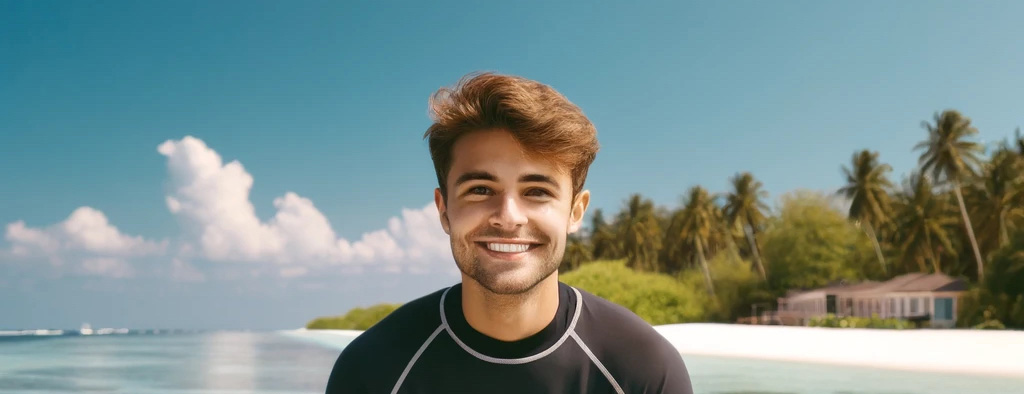
Learning to use a compass is relatively easy. However, it is recommended to learn how to use it on the surface before using it underwater. Once you’ve learned the proper techniques on the surface, it will be much easier, and more enjoyable adapting what you’ve learned to the underwater environment.
When using a compass, it is important to keep it as flat as possible to help prevent the compass card from catching its edge on the housing, causing it to stop rotating. To assist you with direction of travel when using a wrist mounted compass, extend your arm, (the arm without the compass), in front of you, essentially making it an extension of the lubber line.
Reciprocal Course
The first step when preparing for a basic, single direction course is to correctly position the compass bezel based on the desired direction of travel.
For example, if you want to follow a course of 240 degrees, rotate the compass bezel until the 240-degree mark is aligned with the lubber line.
Next, holding the compass so that the lubber line is aligned with the centerline of your body, turn until the compass card’s zero point is in line with the zero point of the bezel. You should now be pointing towards the 240-degree heading.
To follow the 240-degree course, walk in the direction the lubber line is pointing while keeping the compass card and bezel zeroed. Now, walk 50 steps.
To return to your starting point, turn the compass bezel 180 degrees, aligning the lubber line with 60 degrees (240-180=60). Holding the compass correctly, turn your body until the compass card and lubber line are zeroed. Maintain your heading by keeping the lubber line and compass card zeroed, and walk 50 steps; you should be back at your starting point.
This round-trip is called a Reciprocal Course or Opposite Course. Your SNSI Instructor will help you complete a reciprocal course using a compass.
After you’ve become comfortable completing a reciprocal course, you can attempt more complicated routes such as square, rectangular and triangular routes patterns.
Square & Triangle
To conduct a Square Route, four equal sides (distances) must be traveled, making 90-degree turns at each corner. Each 90-degree turn must be made in the same direction; otherwise you will not successfully complete the square.
A rectangle pattern will be much the same as a square pattern, except the opposing sides must be the same length. The angle of rotation will still be 90-degrees and the direction of rotation must be the same.
Finally, to complete an equilateral triangular pattern, three sides of equal distances are traveled, making 120-degree turns in the same direction at the end of each side. After you’ve sufficiently practiced these routes on the surface, repeat them under water.